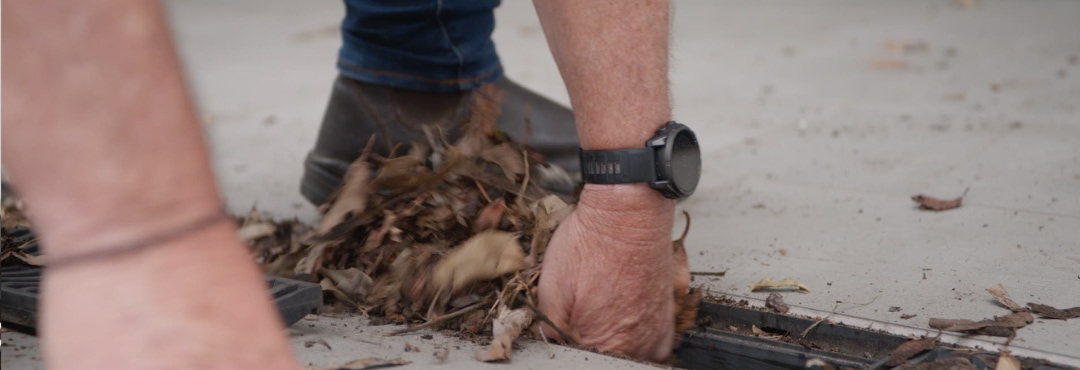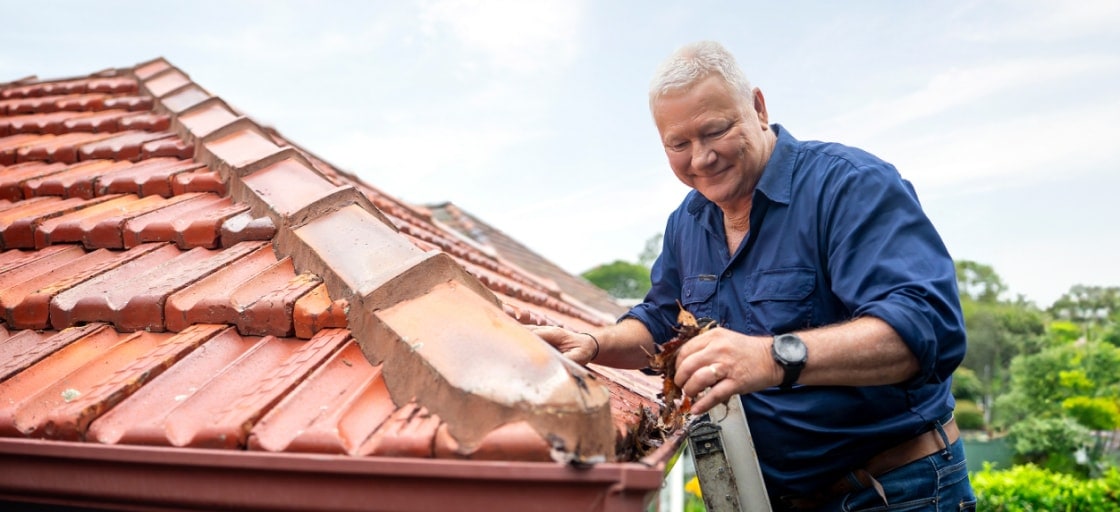Let them flow: keep your stormwater drains blockage-free
How are your drains?

The importance of stormwater drains
Australia's weather can change rapidly from sunny to stormy. Stormwater drains are essential for quickly diverting rainwater from properties to prevent water damage.
Stormwater pipes, often overlooked due to their underground placement, can become blocked, especially after dry spells, leading to structural damage. Regular inspection and maintenance of these systems are crucial to prevent issues, especially when heavy rain arrives.
Stormwater drains connect with your roof guttering and downpipes to carry rainwater to street gutters, and eventually to rivers or the sea. Unlike sewerage pipes, which handle household wastewater, stormwater systems focus solely on rainwater. Depending on your property, the downpipes may be connected directly to the stormwater pipes or empty over open drains. Properly installed, both systems do the job of moving stormwater away from your property.
Perhaps because they’re buried underground, stormwater pipes often don’t get a lot of attention – until something goes wrong. Blockages in the pipes can build up over time, particularly if there is a long dry spell, until the next major downpour reveals what’s wrong. By then, it’s too late. Stormwater from backed-up pipes can cause serious structural issues to buildings including damage to foundations, damp, mould and rot, over time.
As always, prevention is the best cure.
Drain blockages
Remember: drains are just for rain
It’s important to remember that stormwater drains are only meant to carry stormwater – it’s in the name. You should never pour chemicals or paint into a stormwater drain. Apart from being illegal, this can harm wildlife, pollute our river systems, and adversely affect the condition of your pipes. Oil and grease can also solidify in a pipe, making it harder to be washed away.
While it might be tempting to hose those leaves and lawn clippings off the pathway into the nearest drain, any organic material that goes into the stormwater drain may become lodged in the pipe.
If you have open drains, make sure they’re fitted with a grate to prevent debris from getting into the pipes.
How to spot a blockage
During storms, watch for rainwater backing up or spilling from drains or, worst case, filling up the down pipes all the way to the guttering. This signals a blockage. If there’s no rain on the way and you want to test the flow rate, you can run a hose, without any fittings on the end, into the drain or down the downpipe. Check how quickly the water flows away. If it’s working properly, the pipe shouldn’t fill with water.
If you know where the drain empties out into the street, check to see if the water is flowing freely out the other end.
Regularly running water through the drains will also help to flush out any accumulated dirt or debris.
Clearing blockages with snakes in a drain
If you think there’s a blockage that can’t be budged by running water down the drain, it’s time to turn to more specialised tools. There are a variety of drain ‘snakes’, also known as electric eels, that you can borrow, hire or buy.
These are long coils of flexible metal cable. You can feed them down the drain to dislodge a blockage or extract material. Make sure you use one long enough to extend the entire length of the pipe.
Special high-pressure cleaners pump a powerful jet of water through a hose to clear out major blockages, such as tree roots. These can be hired from equipment hirers.
Drain clearing chemicals typically used inside the house for sink blockages shouldn’t be used with stormwater drains. They’re mainly designed to dissolve hair and fat blockages.
When trees are the root of the problem
Trees are a lovely addition to any garden, but they can be a menace for stormwater drains. Tree roots can infiltrate pipes, causing blockages. Houses with older ceramic pipes are particularly at risk as the roots will seek out any cracks or weaknesses in the pipe.
If you suspect root problems, hire a licensed plumber to inspect the inside of the drain with a camera. They will then be able to offer solutions for clearing the pipe, which may include water-jetting, relining the pipe, or even replacing it entirely.
Drain maintenance checklist
Simple drain maintenance, such as clearing leaves away and flushing out the pipe can be done in a matter of minutes. For more serious blockages and drain maintenance, it’s better to call in the professionals who know how to deal with these issues and have the right equipment to do the job.
Stormwater drains work hand in hand with the roof guttering and downpipes. Regularly cleaning your gutters and using gutter guards will go a long way towards preventing material from getting stuck further down the drains. See our guide to preventing roofing disasters for more information.
-
Monthly
-
Quarterly
-
Annually
- If you have a downpipe emptying over an open drain, clear any leaves and debris off the grate.
- During autumn, when the leaves are falling, you might need to do this more often.
- Inspect and clear downpipes and gutters to remove leaves, twigs, and other debris.
- Check that your downpipes and gutters are emptying and that water is running freely through the pipes.
- Flush the pipes with water to remove any debris or dirt, especially if there has been no rain for a while.
- If you have a system that’s prone to blockages, for instance older pipes in proximity to trees, get an inspection done regularly and have the pipes cleaned professionally.
Disclaimer
This article has been prepared by Allianz Australia Insurance Limited ABN 15 000 122 850 AFSL234708 ("Allianz"). It is a summary of key concepts and not meant to represent the complete picture on any given matter. It is not meant to be legal advice. The information should be read in conjunction with the relevant legislation and regulations. In some cases, information has been provided to us by third parties and while that information is believed to be accurate and reliable, its accuracy is not guaranteed in any way.
Any opinions expressed constitute our views at the time of issue and are subject to change. Neither Allianz, nor its employees or directors give any warranty of accuracy or accept responsibility for any loss or liability incurred by you in respect of any error, omission or misrepresentation in this article.
We're here to help
Give us a call, or send us a message
Follow us on
Any advice here does not take into account your individual objectives, financial situation or needs. Terms, conditions, limits, and exclusions apply. Before making a decision about this insurance, consider the relevant Product Disclosure Statement (PDS)/Policy Wording and Supplementary PDS (if applicable). Where applicable, the PDS/Policy Wording, Supplementary PDS and Target Market Determination (TMD) for this insurance are available on this website. We do not provide any form of advice if you call us to enquire about or purchase a product.
Allianz Australia Insurance Limited ABN 15 000 122 850 AFS Licence No. 234708 is the insurer of any general insurance products offered, and Allianz Australia Life Insurance Limited ABN 27 076 033 782 AFS Licence No. 296559 is the insurer of any life insurance products offered. Each entity is responsible for any statements and representations made about its products, on this website.
